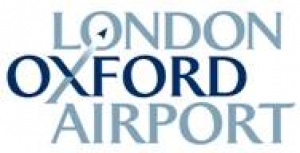London Oxford Airport bucks trend with 12% business aviation traffic growth this year

London Oxford Airport increased its visiting, non-resident jet movements, year on year by 31.6% and saw its overall business aviation movements increase 12% during the period April 2009 to March 2010. Jet fuel sales at its business aviation facility oxfordjet during the period were up 47%. The airport is now handling an average 20 business aircraft movements a day. “This will equate to approximately 6,000 business aviation movements a year, assuming continuation of the current rate - an achievement we are very pleased with,” commented Managing Director, Steve Jones.
Furthermore, starting the year 2010 on a high, despite the challenging weather conditions, the first quarter brought a 25% rise in business aviation traffic, compared with the first quarter of 2009. Oxford Airport remained open every day during the two weeks of snow and ice in early January, unlike several peer airports in the UK.
Oxford Airport, with its enhanced fire and rescue capability - now at Cat 6 - has seen a steady increase in the use of larger and newer business aviation types including Gulfstream G550 and Falcon 7X aircraft operated by Netjets. Resident operator Icejet has two Dornier 328 jets based at the airport and in the month of December it achieved a record 20 flying days out of 24. UK-based LEA has a Legacy 600 and Cessna Citation Mustang now positioned at Oxford, while Hangar 8, the airport’s largest operator, is now supporting nine Hawker aircraft, making it the second largest operator of the type in Europe. It recently accepted the first Hawker 4000 in the UK and also has two Falcon 2000s. Challengers and Globals now supported by Oxford-based engineering business EBAS are also regular visitors.
The only decline in activity for a specific sector was in the number of light piston-twin air taxi movements, down about 15%, year on year. However, evidence suggests that some users may well have chartered light jets or business turboprops instead of traditional light piston-engined twins.

